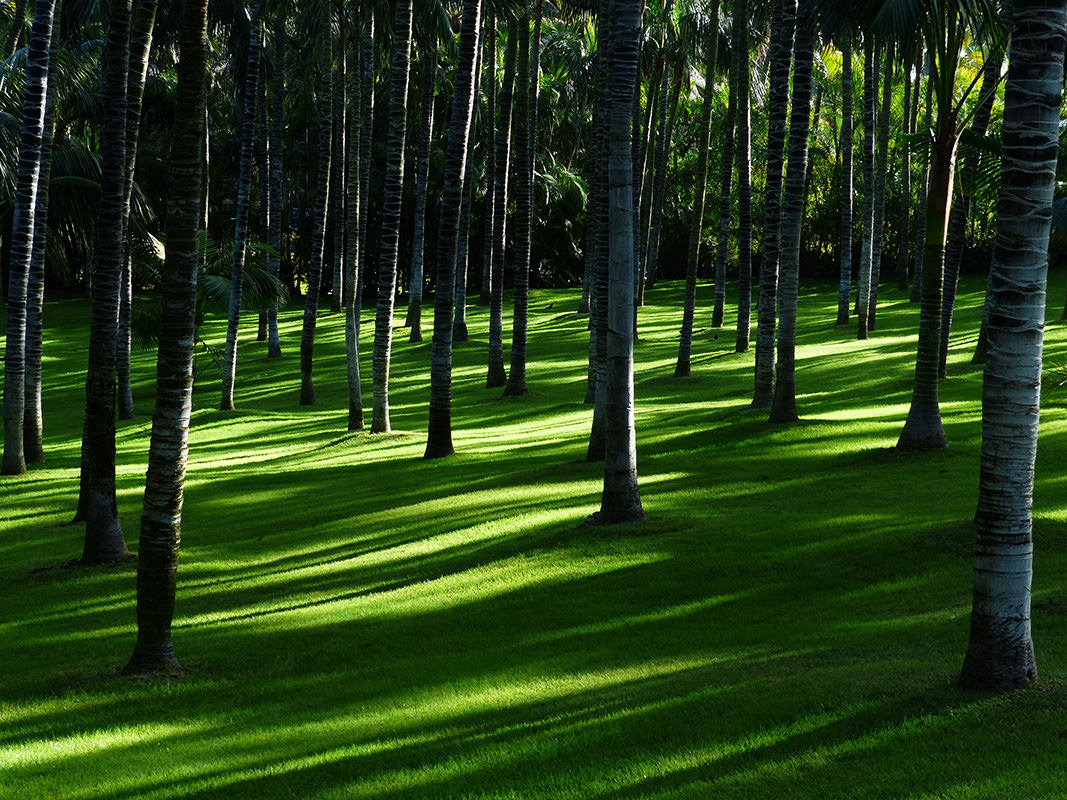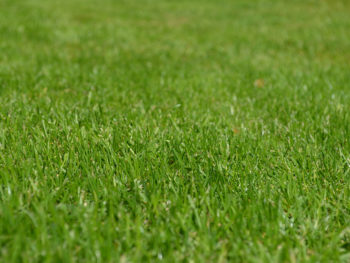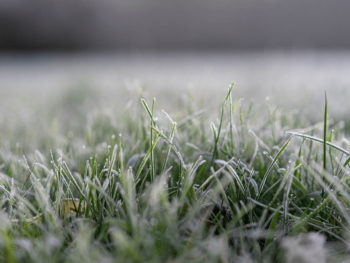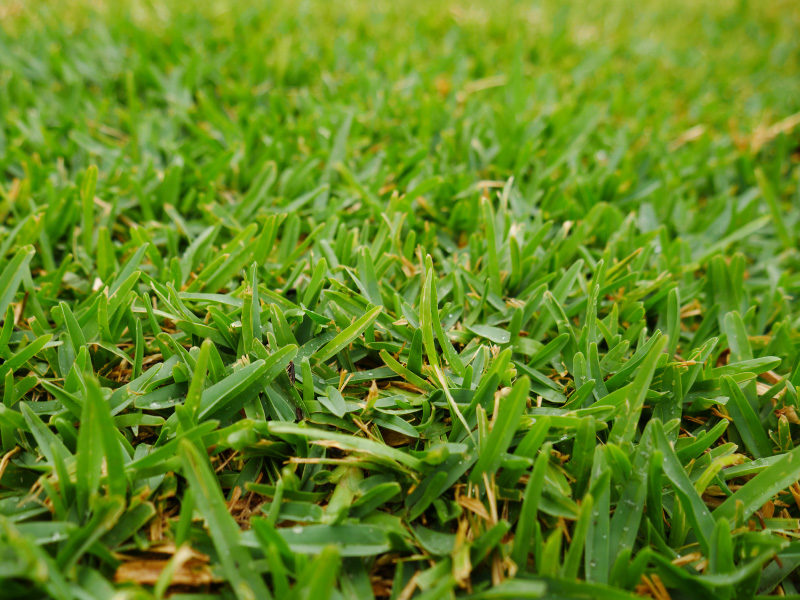Shaded gardens can be the bane of a lawn-proud homeowner’s existence. Growing a quality lawn in a shaded area can be an uphill battle, as special care is required. However, if you’re set on growing grass in a shady area, it can be done. Here’s how.
The problems with shaded grass
All types of grass, no matter how shade tolerant, need a certain amount of light to grow. These grass varieties are ‘tolerant’ but not immune to shade – no type of grass is going to grow well for long in deep and constant shade. Most grass varieties need at least four hours of direct sunlight to survive and thrive, although shade-tolerant varieties can survive on less, or in dappled shade and sunlight conditions.
In reaching up towards the limited sunlight, grass tends to grow “leggy”, thin and weak. It can lose its colour and become more prone to attacks from lawn diseases and pests. Shallow root growth is also usual, leading to slow growth and a sparse-looking lawn.
Grass choice for shaded lawns
The first and most important place to start is with your grass choice. All grasses have different characteristics, and there’s no point trying to grow a variety that only tolerates full sun in a highly shaded area. Choose a shade tolerant variety such as:
- TifTuf. TifTuf has increased photosynthesis, meaning it has a greater ability to absorb sunlight, needing less light than other varieties to thrive. It’s fine blade also ensures shade tolerance. Buy here.
- Sir Walter Buffalo. This tough all-round grass variety performs well in lightly shaded areas that receive around three hours of light per day. Buy here.
- Sir Grange. Due to its slow growth habit, Sir Grange doesn’t require as much sunlight as other varieties currently available. It has high shade tolerance, needing only three hours of direct sunlight a day. Buy here.
Allow as much light as possible
It may not always be achievable, but try and allow as much light to penetrate to the grass as possible. This may involve removing trees or pruning overhanging branches or bushes to allow as much sunlight onto your lawn as you can. If you don’t want to remove trees entirely, try and thin the branches of existing trees so that sunlight can better penetrate through the canopy.
Obviously, there’s nothing you can do if the shade is coming from a building or landscape feature, and you will just have to undertake some careful management.
Keep in mind that the amount of light reaching your lawn will vary at different times of the year too, as the sun changes position, or as trees lose their leaves in winter.
Watering shaded lawns
It’s extremely important to avoid overwatering a shaded lawn, as water will not evaporate as quickly from a shaded surface. Too much watering will lead to a damp, sodden spot that just encourages diseases to fester. Water shaded parts of your lawn only when necessary – but water them deeply. This encourages deeper roots to grow, which is vital for the survival of a shady lawn.
Keep in mind that shaded lawns under trees are prone to drying out quicker than lawns growing in building shade. This is due to the fact that it’s harder for rain to pass through the tree canopy to reach the lawn, and the tree roots will compete with the grass for the moisture that does make it through. As a result, grass beneath a shady tree will need more frequent watering than grass growing in building shade. Monitor your lawn carefully and adjust your watering to meet its particular needs.
Mowing shaded lawns
It can be best in shady areas to let your lawn grow a little longer than usual, and never cut off more than a third of the length of the blade. Keep shaded grass half to one inch taller than sunny grass, as the longer blade length allows for a greater area to carry out photosynthesis. If you scalp a shady lawn, chances are it won’t recover.
Don’t use your lawn clippings on a shaded lawn either, as they will prevent much-needed light reaching the soil.
Aerating shady lawns
Shady areas of grass will benefit from regularly aerating the soil, as this process allows air, water and fertiliser to penetrate to the grass roots. Aim to aerate a little before the grass enters its peak growing season, so in late spring or early summer. You can use a lawn coring machine, aerator shoes or just a fork to dig holes in the lawn and allow the air in.
Fertilising shady lawns
You might think you’d need to fertilise a shaded lawn more to help it grow, but grass in shady areas actually needs less fertiliser than a sunny lawn. Use half to two-thirds less fertiliser on your shady area of grass. Fertilise your shaded area at the same time and as often as you do the sunny areas of your lawn, but reduce the amount. Try adding some organic matter such as compost in early spring to give your shaded grass a good boost.
Weeding shady lawns
Harsh herbicides can also be stressful to shady grass, so limit chemical application in the shaded area. If weeds do occur, spot spray or hand-remove them to help avoid stress to the grass.
For more on controlling weeds in your lawn without chemicals, click here.
Keep traffic to a minimum
To protect your vulnerable, shaded grass, try and keep foot and pet traffic to a minimum in the shaded area. Vary your mowing pattern in the shady areas as well, to help prevent compaction and ruts developing.
Keep shady lawns clear
Lawns growing under trees will often accumulate a collection of dead leaves. Don’t allow leaves and other debris to pile up under trees, as they will prevent any light from reaching the grass. Rake regularly under trees and keep the lawn clean and clear.
Restore soil balance
Shaded soil conditions can become unbalanced over time, with low soil pH and poor drainage being common problems. Test your soil with a pH testing kit to uncover what’s really happening in the shaded area, and follow the recommendations to restore the pH to its optimal balance.
Manage your expectations
A shaded lawn may never look as lush, thick and attractive as one growing in full sun – and that’s okay. Don’t seek perfection in your shaded area. If you can get a reasonably good-looking lawn happening in shade, you’re doing a good job. Follow these tips and it’s quite achievable.





 Kick start your lawn out of winter hibernation
Kick start your lawn out of winter hibernation